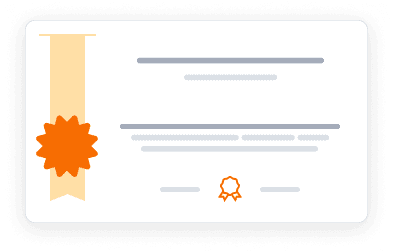This course is part of American Sign Language Science.
This comprehensive course examines the various factors influencing sign language learning and acquisition. Students explore how age impacts language fluency and investigate the neurological aspects of sign language processing, particularly the left hemisphere's role. The course covers linguistic typology, sign innovation, and the comparison between home signs and mature community sign languages. Through scientific analysis, participants gain insights into natural sign language acquisition stages and different pedagogical approaches for first and second language learners.
Instructors:
English
English
What you'll learn
Understand factors affecting sign language acquisition and learning
Explore the neurological basis of sign language processing
Analyze linguistic typology in sign languages
Compare different sign language pedagogical approaches
Identify stages of natural sign language acquisition
Examine grammar features in home and community sign languages
Skills you'll gain
This course includes:
PreRecorded video
Graded assignments, exams
Access on Mobile, Tablet, Desktop
Limited Access access
Shareable certificate
Closed caption
Get a Completion Certificate
Share your certificate with prospective employers and your professional network on LinkedIn.
Created by
Provided by

Top companies offer this course to their employees
Top companies provide this course to enhance their employees' skills, ensuring they excel in handling complex projects and drive organizational success.





Module Description
This course explores the scientific aspects of sign language acquisition and learning. Students examine various factors affecting language learning patterns, including age-related influences and neurological processes. The curriculum covers linguistic typology, sign innovation, and the development of sign language grammar. Special attention is given to understanding the similarities and differences between home signs and mature community sign languages, as well as comparing first and second language learning approaches.
Fee Structure
Individual course purchase is not available - to enroll in this course with a certificate, you need to purchase the complete Professional Certificate Course. For enrollment and detailed fee structure, visit the following: American Sign Language Science
Payment options
Financial Aid
Instructor

7 Courses
Pioneering Deaf Linguist and Sign Language Research Pioneer
Ted Supalla has established himself as a leading authority in sign language research and linguistics at Georgetown University, where he serves as Professor of Neurology, Linguistics, and Psychology. Born deaf into a deaf family, he completed his academic journey with a Ph.D. in Psychology from the University of California, San Diego in 1982. As director of the Sign Language Research Lab at Georgetown's Center for Brain Plasticity and Recovery, he conducts groundbreaking research on sign language development, structure, and evolution. His significant contributions include co-authoring with Elissa Newport the first work on movement changes in American Sign Language verb-to-noun derivation, and producing seminal research on classifier constructions and verbs of motion. In 2015, he published Sign Language Archaeology: Understanding the Historical Roots of American Sign Language with Patricia Clark, advancing our understanding of ASL's historical development. His research consistently demonstrates that sign languages parallel spoken languages in complexity and grammatical development. He has served as a consultant to the World Federation of the Deaf and continues to expand the field through the Historical Sign Language Database, a public resource tool hosted at Georgetown. Married to Elissa L. Newport, also a professor in Georgetown's Department of Neurology, Supalla maintains an active research agenda focusing on sign language variation and historical change.
Testimonials
Testimonials and success stories are a testament to the quality of this program and its impact on your career and learning journey. Be the first to help others make an informed decision by sharing your review of the course.
Frequently asked questions
Below are some of the most commonly asked questions about this course. We aim to provide clear and concise answers to help you better understand the course content, structure, and any other relevant information. If you have any additional questions or if your question is not listed here, please don't hesitate to reach out to our support team for further assistance.


